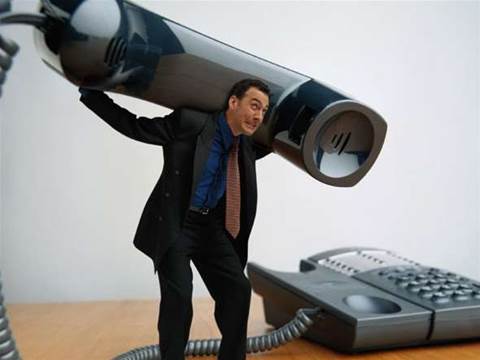Noting an increased demand for contact centre performance management systems, Nick Rodda, managing director of hosted contact centre software provider Global Speech Networks (GSN) described what he calls an evolution of contact centres of today.
“Call centres used to be a dollars and cents business,” he said.
“The evolution is now that businesses have taken the call centre from a pure cost-driven exercise to realise that they can actually compete in the market by providing a better service or differentiated type of service for their customers.”
In efforts to be more contactable to their customers, call centres have grown from the traditional telephone on a desk to include e-mail, online support, and automated systems.
The demand has driven an increase in the technological complexity of contact centres, Rodda said.
GSN hawks contact centre software on a Software as a Service (SAAS) basis, incorporating performance management and automated answering tools in its offerings.
Besides quantifying customer satisfaction, the software is able to also merge data about the performance of each contact centre agent with CRM data and traditional call centre metrics to create daily scores for individuals, teams and businesses.
As GSN’s software can be purchased as a completely managed service, Rodda expects the service to mitigate staffing issues when it comes to sourcing developers and technologists to maintain specialist contact centre software.
“Once upon a time there was a witch doctor, and he knew everything about medicine. Now you’ve got brain surgeons, orthopedic surgeons, cardiologists; there are so many areas of specialisation,” Rodda said.
“IT has become like that too; your resident IT group can only be across so many technologies.”
GSN’s technology has existed for more than two years, Rodda said, noting however that demand for the service has only really picked up in the past seven months.
“I think that it’s a sign that the call centre market is evolving to acknowledge that better customer satisfaction means better profits,” he said.
“People are starting to realise that you can’t manage the performance of a call centre agent based on how many calls they took or how long they’re on calls. It doesn’t tell you if they’ve actually done a good job.”
“This evolution is going to be continual,” he said. “It’s very difficult for organisations to see what they need to do in the future and to invest in technology now to support them into the future.”
Rodda marked speech recognition and automation as the next step for contact centres of the near future.
While contact centre automation still has a long way to go from a commercial adoption perspective, Rodda said that automated customer support could provide an always-on contact point for customers and cost reductions for businesses, as well as cutting down on the mundane interactions that contact centre agents are currently forced to fulfil, he said.
“Years ago, people didn’t want to go the ATM because they preferred face-to-face banking, and they found it [automated banking] an insult. Nowadays, people recognise that it’s faster and more convenient,” Rodda speculated.
“It’s the same with speech recognition and automated call centres,” he said.
Contact centres: Evolution
By
Liz Tay
on Apr 1, 2008 8:17AM

Got a news tip for our journalists? Share it with us anonymously here.
Partner Content

Guiding customers on the uneven path to AI adoption

MSPs with a robust data protection strategy will achieve market success
.png&h=142&w=230&c=1&s=1)
How mandatory climate reporting is raising the bar for corporate leadership

Beyond the box: How Crayon Is Redefining Distribution for the Next Era
_(21).jpg&h=142&w=230&c=1&s=1)
Empowering Sustainability: Schneider Electric's Dedication to Powering Customer Success







.jpg&w=100&c=1&s=0)







.jpg&q=95&h=298&w=480&c=1&s=1)



